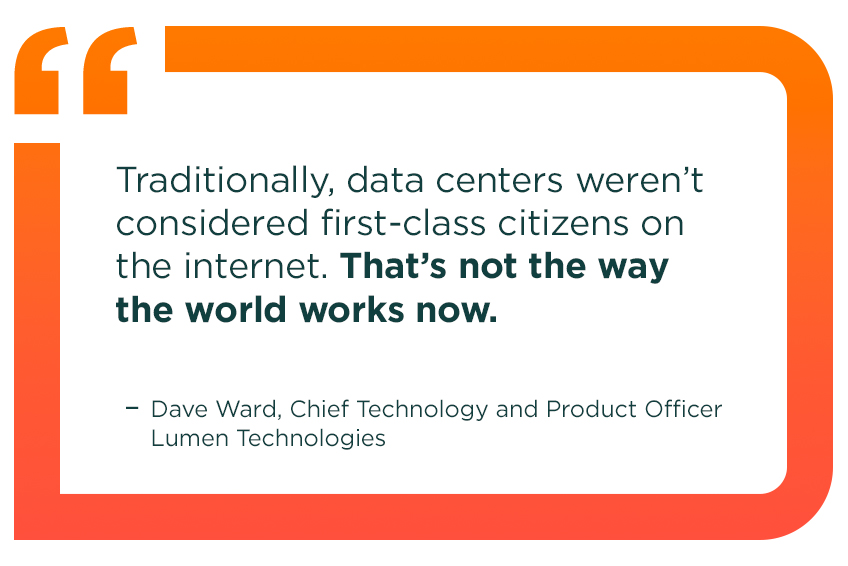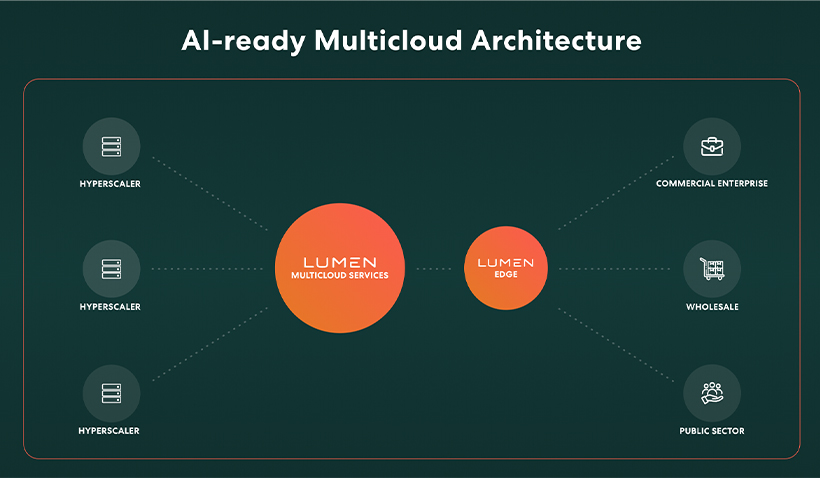Why the infrastructure needs of AI are upending the way the internet works

Originally published by Fast Company
The ability to move data at will—whenever and wherever you need it—is the standard on which every AI ambition ultimately depends
A funny thing happened on the way to digital transformation. Just as many firms were celebrating moving their data crown jewels to the cloud, the unexpected advent of generative AI suddenly meant they had to move as much data as possible, as fast as possible, between their new clouds and the data centers of AI “hyperscalers” like Microsoft. This change of plans has not only proven excruciatingly difficult due to power, water, processor, and network constraints, but it’s also a rearrangement the internet was never designed for.
For the moment, these pressures have companies scrambling to secure access to one of the handful of nodes with high-speed links to the internet’s backbone, such as the mushrooming data centers of Northern Virginia. But the most successful firms of tomorrow will be the ones whose business strategies mirror their AI strategies, which are in turn a function of their digital infrastructure. In short, the winners will be the ones who become AI-native organizations at every level, able to swap models and service providers at the flip of a switch to keep pace with changing business conditions.
 “Having an AI strategy requires a cloud strategy, a data strategy, and a network strategy,” says Dave Ward, chief technology and product officer for Lumen Technologies. Just as companies once realized they were more than the sum of their assets—that they were truly defined by the scope and scale of their entire value chains—they are quickly realizing AI will follow the same pattern. “An enterprise is defined by [its] communication profile,” Ward argues, referring to the movement of data within and between firms. In other words, show me your topology and I can tell you where you are on your journey.
“Having an AI strategy requires a cloud strategy, a data strategy, and a network strategy,” says Dave Ward, chief technology and product officer for Lumen Technologies. Just as companies once realized they were more than the sum of their assets—that they were truly defined by the scope and scale of their entire value chains—they are quickly realizing AI will follow the same pattern. “An enterprise is defined by [its] communication profile,” Ward argues, referring to the movement of data within and between firms. In other words, show me your topology and I can tell you where you are on your journey.
Historic Network Buildout
Once companies realized cracking open their data silos and moving the contents to the cloud wasn’t going to cut it, they ran into the next problem: The internet as we know it wasn’t made to move vast amounts of information directly from one data center to the next. Traditional network architectures follow rigid hub-and-spoke patterns sufficient for earlier eras that falter when transferring AI workloads between clouds. “Traditionally, data centers weren’t considered first-class citizens on the internet,” Ward explains. “Well, that’s not the way the world works now.” The internet’s once-laudable egalitarianism now produces network latency and congestion while stoking an arms race to stockpile compute around a handful of hubs.

The near-term future of AI infrastructure lies in direct access between corporate clouds and AI hyperscalers with dedicated links for maximum throughput and strategic speed. To meet this demand, Lumen has embarked on a historic network buildout, more than doubling its U.S. intercity fiber miles. “We’re seeing the largest expansion of the internet in our lifetime,” Ward says. Where this expansion differs from previous eras is the ability to reroute high-volume traffic on the fly, allowing customers to mix and match clouds and data centers to suit their workflows rather than the other way around.
Agent, Meet Agent
Once this parallel AI-centric internet is fully realized, firms’ AI strategies will more effectively mirror their business strategies. Early movers in the energy sector are already using AI to parse geological surveys, while pharmaceutical firms are accelerating drug discovery and therapeutic research and healthcare providers are beginning to implement diagnostic AI. All require some rearrangement of resources that depart from traditional network architectures that supported their past operations. For example, healthcare initiatives require secure, high-bandwidth connections between point-of-service and back-end compute facilities to satisfy compliance and service requirements. Just as the execution of these tasks will increasingly define firms’ success or failure, the ability to dynamically allocate resources between workloads will determine the shape and competitiveness of firms. Or as Ward puts it, “Business leaders will define their enterprise not by the brick-and-mortar necessarily, but where their data and their workloads actually reside.”

The near-term future of AI infrastructure lies in direct access between corporate clouds and AI hyperscalers with dedicated links for maximum throughput and strategic speed. This enables high-volume traffic to be rerouted on the fly, allowing customers to mix and match clouds and data centers to suit their workflows rather than the other way around. Source: Lumen
This network-centric approach to business—you are the sum of your clouds and hyperscalers—will only grow more pertinent as generative AI evolves beyond its chatbot phase toward “agentic” systems, i.e., semi-autonomous AIs able to communicate with people and each other. “Your agents will talk to other agents for data to create the experience or results your customer wants,” Ward explains. Once again, delivering on real-time interactions fueled by data drawn from various systems will require both high bandwidth and ultra-low latency networks—especially as the human-AI feedback loops grow increasingly important and more complicated.

Taken together, this shift represents a fundamental rewiring of the enterprise—one that not even the most fervent digital evangelists could have envisioned. “The multi-cloud journey probably took a decade longer than it needed to,” Ward says. “With AI, companies don’t have another 10 years to shape their business, or they’ll be left behind.”
This urgency is propelling the once-in-a-generation buildout that is rewiring the geography of the internet itself, as new data centers spring up wherever power is plentiful with bandwidth following close behind. The ability to move data at will—whenever and wherever you need it—isn’t just a technical fix, but the hidden backbone upon which every AI ambition ultimately depends.
This content is provided for informational purposes only and may require additional research and substantiation by the end user. In addition, the information is provided “as is” without any warranty or condition of any kind, either express or implied. Use of this information is at the end user’s own risk. Lumen does not warrant that the information will meet the end user’s requirements or that the implementation or usage of this information will result in the desired outcome of the end user. All third-party company and product or service names referenced in this article are for identification purposes only and do not imply endorsement or affiliation with Lumen. This document represents Lumen products and offerings as of the date of issue. Services not available everywhere. Lumen may change or cancel products and services or substitute similar products and services at its sole discretion without notice. ©2025 Lumen Technologies. All Rights Reserved.






